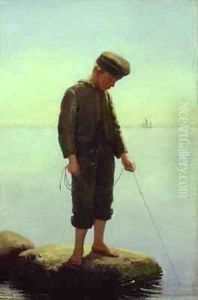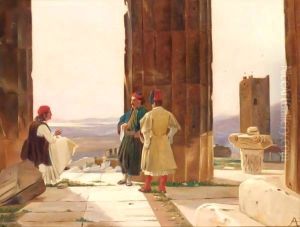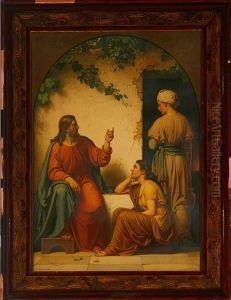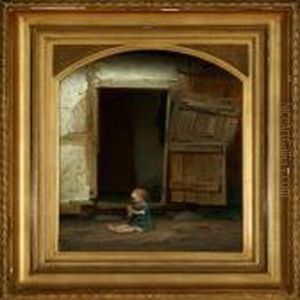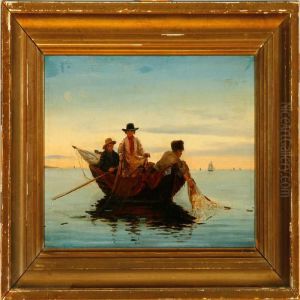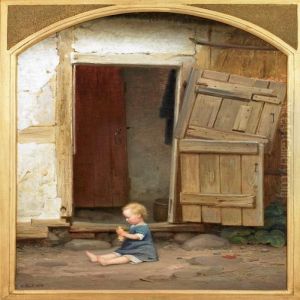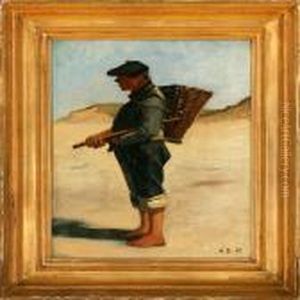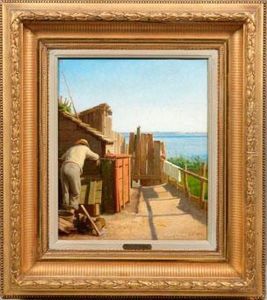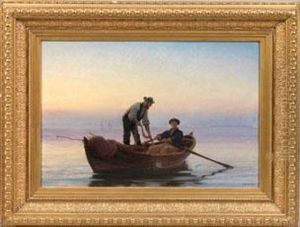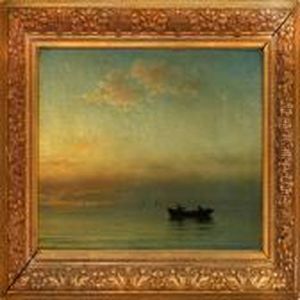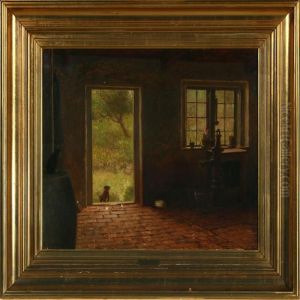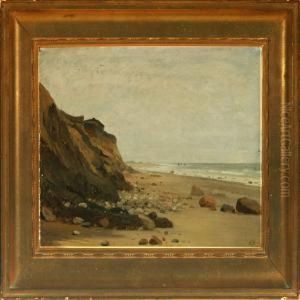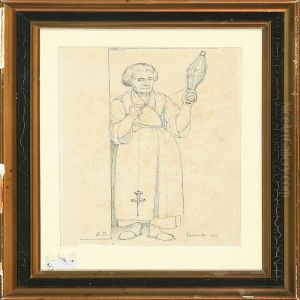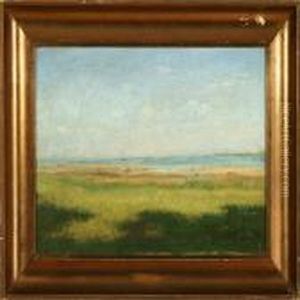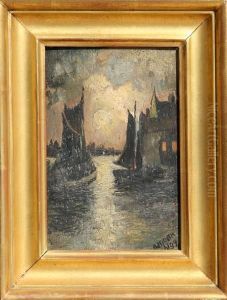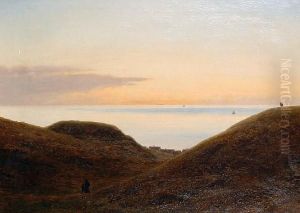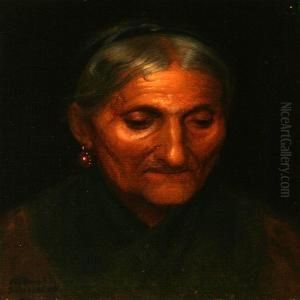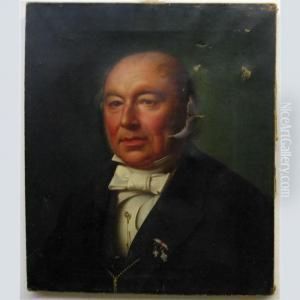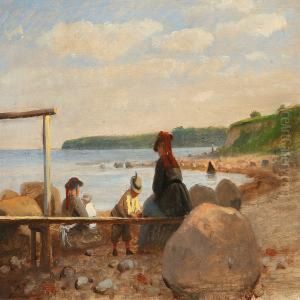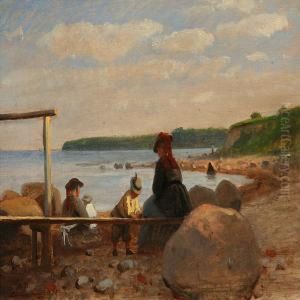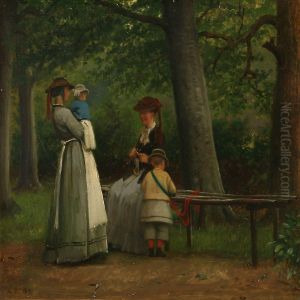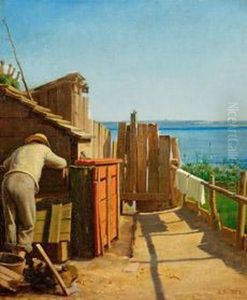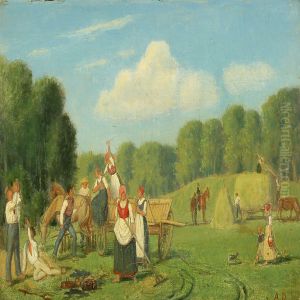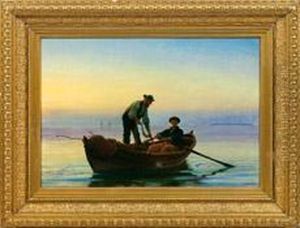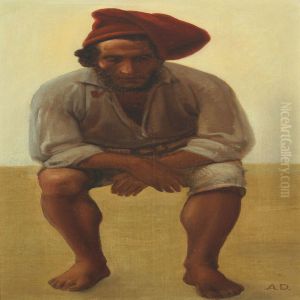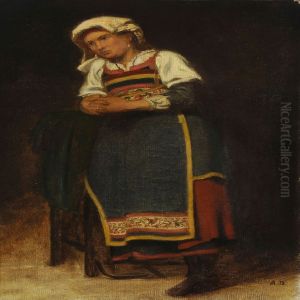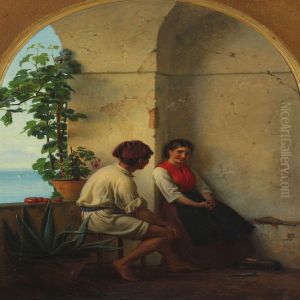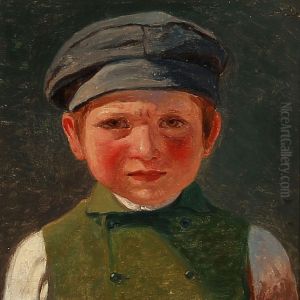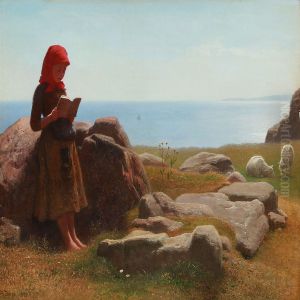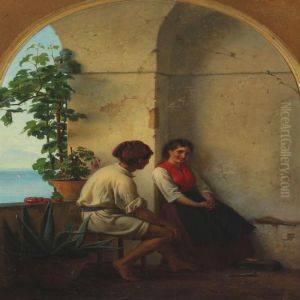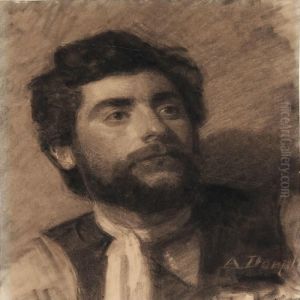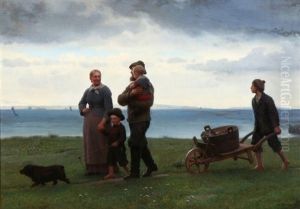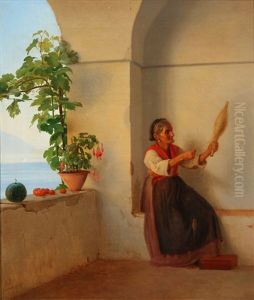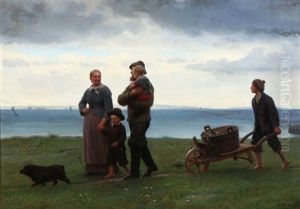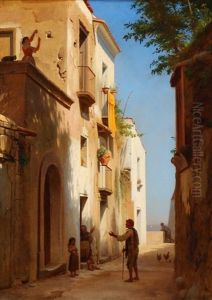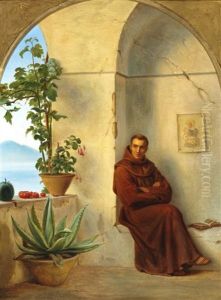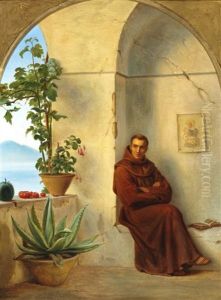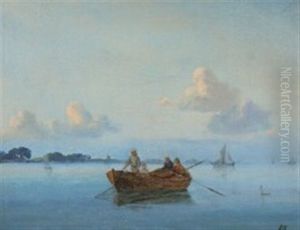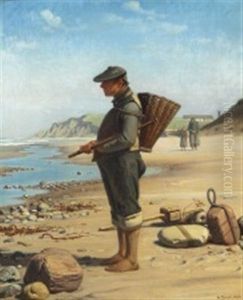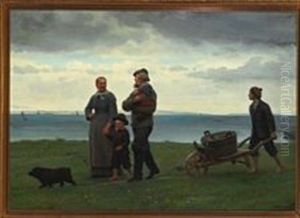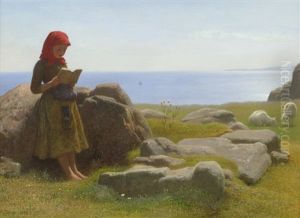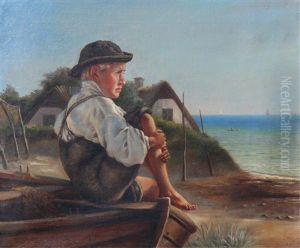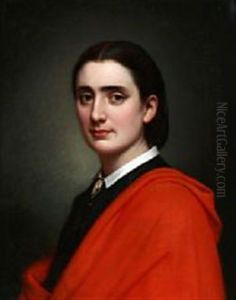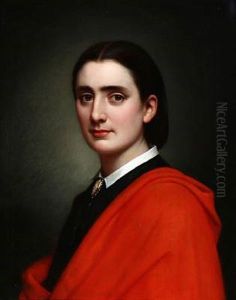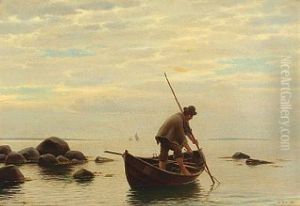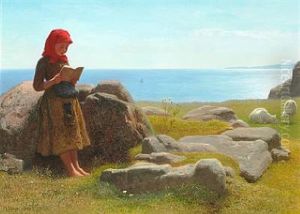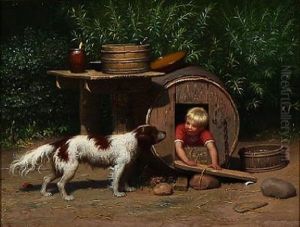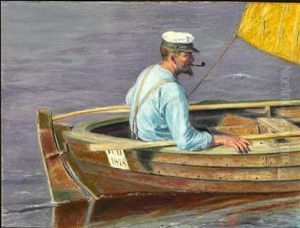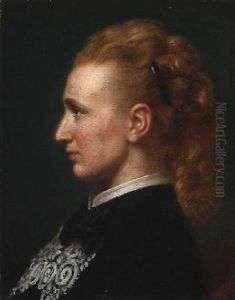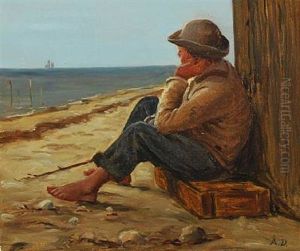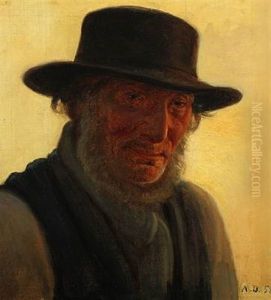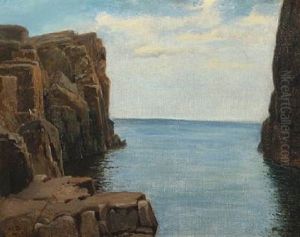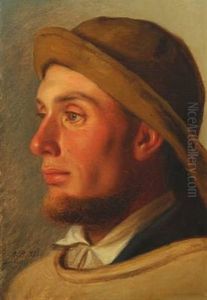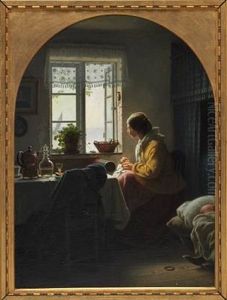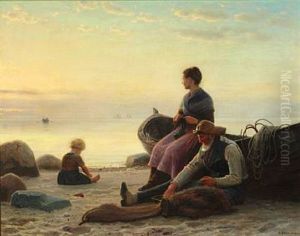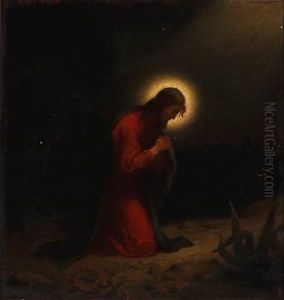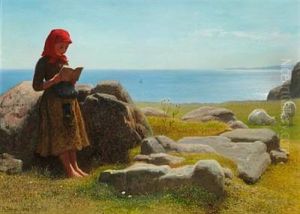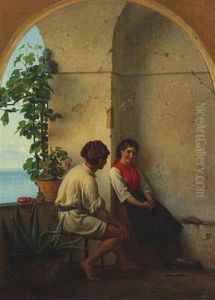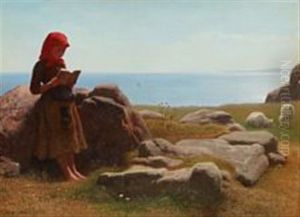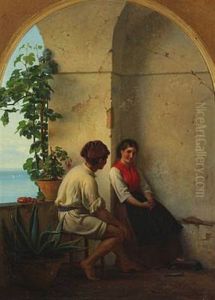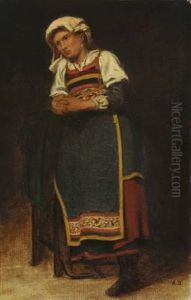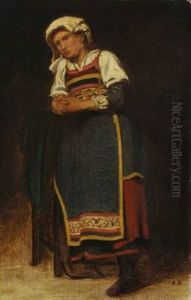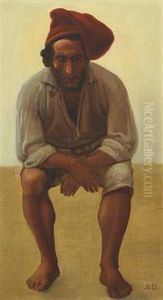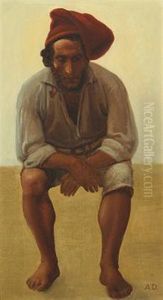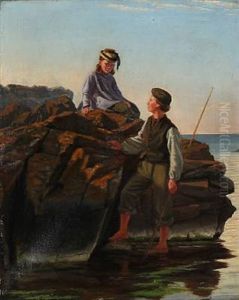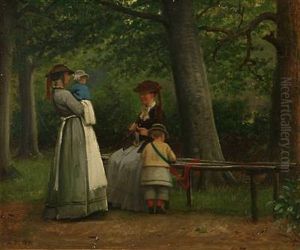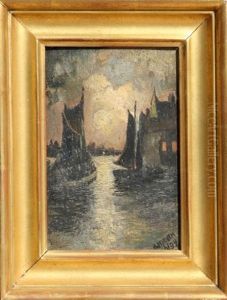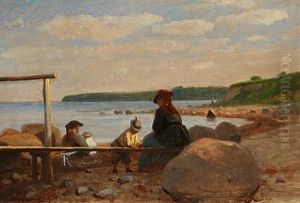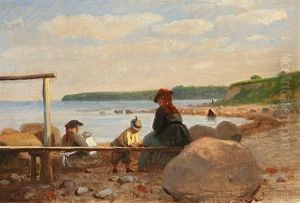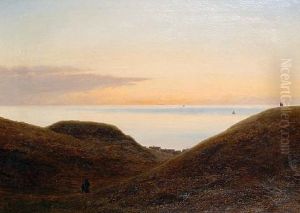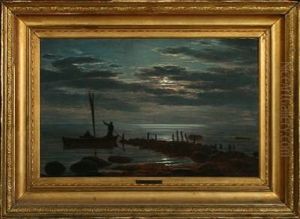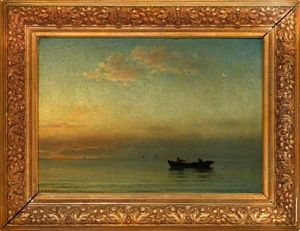Anton Laurids Johannes Dorph Paintings
Anton Laurids Johannes Dorph, a Danish painter born on November 11, 1831, in Ringsted, was known for his genre paintings and portraits which reflect the influence of the Danish Golden Age, a period of cultural flowering in Denmark during the early to mid-19th century. Dorph studied at the Royal Danish Academy of Fine Arts in Copenhagen, where he was influenced by his contemporaries and the artistic climate of the time, which emphasized a naturalistic representation of reality and often depicted everyday life in Denmark.
Dorph's early works were primarily portraits and genre scenes. Genre painting, which portrays aspects of everyday life, was a popular style in Denmark during the 19th century. Dorph's attention to detail and ability to capture the nuances of domestic life contributed to his reputation. He often depicted the rural life of fishermen and farmers, showing a keen interest in the lives of the common people and an ability to depict the Danish landscape with sensitivity.
Throughout his career, Dorph continued to develop his style, and his paintings became known for their warmth and the gentle, empathetic portrayal of his subjects. He became a respected figure in the Danish art world, although he never achieved the same level of fame as some of his contemporaries, such as the more widely known Danish Golden Age painters like Christoffer Wilhelm Eckersberg, Wilhelm Bendz, and P.C. Skovgaard.
Anton Dorph was also an educator and served as a teacher at the Royal Danish Academy, where he influenced the next generation of Danish artists. He became a member of the Academy Council and held the position of a professor from 1877 to 1890. His role in the Academy helped shape the artistic education in Denmark during a period of transition as the nation moved towards more modern artistic expressions at the turn of the 20th century.
Dorph's paintings are characterized by their serene and contemplative nature, often imbued with a sense of quiet dignity. His works are part of the collections of several museums, and they continue to be studied as part of the broader narrative of Danish art history. Anton Dorph passed away on May 16, 1914, leaving behind a legacy that encapsulates the spirit of the Danish Golden Age and the transition towards modernity in Danish art.
